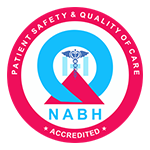If you’ve been hearing the term chronic kidney disease (CKD) and wondering what it really means, or what the CKD diagnosis criteria really are, it can all feel a bit overwhelming. But don’t worry. Let’s break it down in a calm, easy-to-understand way, just like how a friend would explain it over a cup of tea.
Chronic kidney disease means that your kidneys, the bean-shaped organs that filter your blood, aren’t working as well as they should. The word “chronic” means it happens slowly over time. And here’s the thing: CKD doesn’t usually cause major symptoms in the early stages. That’s why diagnosis is so important; it’s often the only way to catch it early before things get worse.
So, how do doctors diagnose chronic kidney disease? Let’s walk through the process together.
Most of the time, CKD is first suspected during a routine check-up or blood test. Maybe your doctor notices something a little off in your bloodwork. Or maybe you’ve been feeling tired, or your ankles have been swelling, and you decide to get things checked out. Either way, the first step toward diagnosing kidney issues is usually just a conversation and a few basic tests.
From there, they’ll order a few specific tests to see how well your kidneys are doing.
The main test doctors use to check kidney function is a blood test called serum creatinine. Creatinine is a waste product that your muscles make naturally. Normally, your kidneys filter it out of your blood. But if your kidneys are struggling, creatinine levels in your blood can build up.
Now, this is where something called eGFR comes in. That stands for estimated glomerular filtration rate. It’s a number that tells you how well your kidneys are filtering waste.
It’s kind of like a report card for your kidneys.
Another super important test is a urine test, especially to look for protein. Normally, healthy kidneys don’t let much protein leak into your urine. But when the kidneys are damaged, they might start “spilling” protein. This condition is called proteinuria or albuminuria.
Urine tests are like a sneak peek into how your kidneys are functioning daily.
Sometimes, doctors need to take a closer look at your kidneys. That’s where imaging tests come in.
Imaging helps doctors rule out other issues that might be affecting kidney function.
In some cases, when the cause of kidney damage isn’t clear, your doctor might recommend a kidney biopsy. It sounds scary, but it’s actually a pretty straightforward procedure. They take a tiny sample of kidney tissue using a needle (usually under local anesthesia), and then look at it under a microscope.
This can help diagnose specific types of kidney disease or check how much damage has already been done.
Here’s something important to remember: CKD isn’t diagnosed from just one odd test result. To be considered “chronic,” the problem has to last at least three months.
So even if your eGFR is low one time, or there’s a little protein in your urine, your doctor will usually repeat tests over time to confirm what’s going on.
Your doctor might also look at:
If the tests confirm you have chronic kidney disease, don’t panic. While it sounds serious—and it is something to take seriously, it doesn’t mean your kidneys will stop working tomorrow. Many people live for years with CKD, especially when it’s caught early and managed well.
In Ayurveda, this is where gentle herbal support and lifestyle changes can also make a huge difference, but always check with your healthcare provider before combining approaches.
The latest treatment for chronic kidney disease focuses on slowing damage apt medications, controlling blood pressure, and managing diabetes. There’s also growing interest in Ayurveda to support kidney health naturally.
Ayurvedic treatment for CKD offers gentle, natural ways to manage the disease. The use of potent herbs like Punarnava, Gokshura, Varun, and Kaasni helps detoxify the kidneys and strengthen their function. Along with herbal support, personalized diet plans and lifestyle changes play a big role, like avoiding salty, processed foods and staying hydrated. Panchakarma therapies.
Diagnosing chronic kidney disease isn’t about one single test. It’s a process, usually involving blood and urine tests, possibly some imaging, and sometimes even a biopsy. And more importantly, it’s about monitoring over time to see how your kidneys are holding up.
The earlier CKD is caught, the more you can do to slow it down and keep your kidneys as healthy as possible. So, if your doctor suggests testing, don’t hesitate. It’s a smart step toward protecting your health.
And if you’re already navigating the journey with CKD, know that you’re not alone. With the right care, the right mindset, and the right information, you can manage it and thrive.
Ans.
Fatigue, swollen ankles, frequent urination, foamy urine, and poor appetite.
Ans.
Blood tests (creatinine, eGFR), urine tests (albumin), and imaging (ultrasound).
Ans.
It measures waste buildup to assess kidney function.
Ans.
It estimates how well kidneys filter waste from blood.
Ans.
Yes, they detect protein or blood in the urine.
Ans.
Yes, it can cause or result from CKD.
Ans.
At least once a year, or as advised by a doctor.
Ans.
Yes, they show kidney size, structure, and blockages.
Ans.
Often in stages 2 or 3, when symptoms begin or tests show decline.
Ans.
People with diabetes, high BP, family history, or age 60+.

Certificate no- AH-2023-0186
JAN 05,2023-JAN 04,2026
"Ayurveda is not just a system of medicine; it's a way of life. Connect with us to embrace a lifestyle that nurtures your body, mind, and soul."
Book Consultation Now